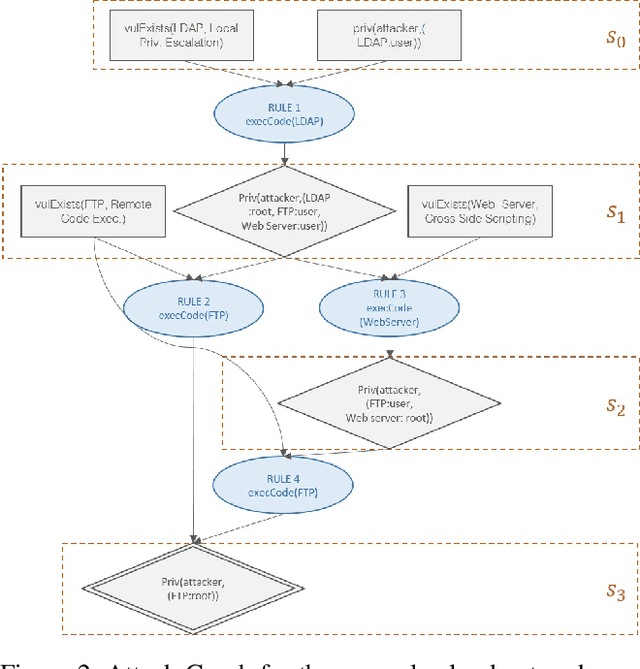Dijiang Huang
Markov Game Modeling of Moving Target Defense for Strategic Detection of Threats in Cloud Networks
Dec 23, 2018



Abstract:The processing and storage of critical data in large-scale cloud networks necessitate the need for scalable security solutions. It has been shown that deploying all possible security measures incurs a cost on performance by using up valuable computing and networking resources which are the primary selling points for cloud service providers. Thus, there has been a recent interest in developing Moving Target Defense (MTD) mechanisms that helps one optimize the joint objective of maximizing security while ensuring that the impact on performance is minimized. Often, these techniques model the problem of multi-stage attacks by stealthy adversaries as a single-step attack detection game using graph connectivity measures as a heuristic to measure performance, thereby (1) losing out on valuable information that is inherently present in graph-theoretic models designed for large cloud networks, and (2) coming up with certain strategies that have asymmetric impacts on performance. In this work, we leverage knowledge in attack graphs of a cloud network in formulating a zero-sum Markov Game and use the Common Vulnerability Scoring System (CVSS) to come up with meaningful utility values for this game. Then, we show that the optimal strategy of placing detecting mechanisms against an adversary is equivalent to computing the mixed Min-max Equilibrium of the Markov Game. We compare the gains obtained by using our method to other techniques presently used in cloud network security, thereby showing its effectiveness. Finally, we highlight how the method was used for a small real-world cloud system.
FMCode: A 3D In-the-Air Finger Motion Based User Login Framework for Gesture Interface
Aug 01, 2018



Abstract:Applications using gesture-based human-computer interface require a new user login method with gestures because it does not have a traditional input method to type a password. However, due to various challenges, existing gesture-based authentication systems are generally considered too weak to be useful in practice. In this paper, we propose a unified user login framework using 3D in-air-handwriting, called FMCode. We define new types of features critical to distinguish legitimate users from attackers and utilize Support Vector Machine (SVM) for user authentication. The features and data-driven models are specially designed to accommodate minor behavior variations that existing gesture authentication methods neglect. In addition, we use deep neural network approaches to efficiently identify the user based on his or her in-air-handwriting, which avoids expansive account database search methods employed by existing work. On a dataset collected by us with over 100 users, our prototype system achieves 0.1% and 0.5% best Equal Error Rate (EER) for user authentication, as well as 96.7% and 94.3% accuracy for user identification, using two types of gesture input devices. Compared to existing behavioral biometric systems using gesture and in-air-handwriting, our framework achieves the state-of-the-art performance. In addition, our experimental results show that FMCode is capable to defend against client-side spoofing attacks, and it performs persistently in the long run. These results and discoveries pave the way to practical usage of gesture-based user login over the gesture interface.
FMHash: Deep Hashing of In-Air-Handwriting for User Identification
Jun 10, 2018



Abstract:Gesture biometrics are gaining popularity with gesture input interface on mobile and Virtual Reality (VR) platforms that lack a keyboard or touchscreen to type a password for user authentication. However, less attention is paid to the gesture-based user identification problem, which essentially requires indexing and searching the gesture motion templates in a large database efficiently. In this paper, we propose FMHash, a user identification framework that can generate a compact binary hash code from a piece of in-air-handwriting of an ID string, which allows fast search in a database of in-air-handwriting templates through a hash table. To demonstrate the effectiveness of the framework, we implemented a prototype and report preliminary results (~98% precision and ~93% recall). More detailed evaluation, comparison, and improvement is working-in-progress. The ability of hashing in-air-handwriting pattern to binary code can be used to achieve convenient sign-in and sign-up with in-air-handwriting gesture ID on future mobile and VR devices.
 Add to Chrome
Add to Chrome Add to Firefox
Add to Firefox Add to Edge
Add to Edge